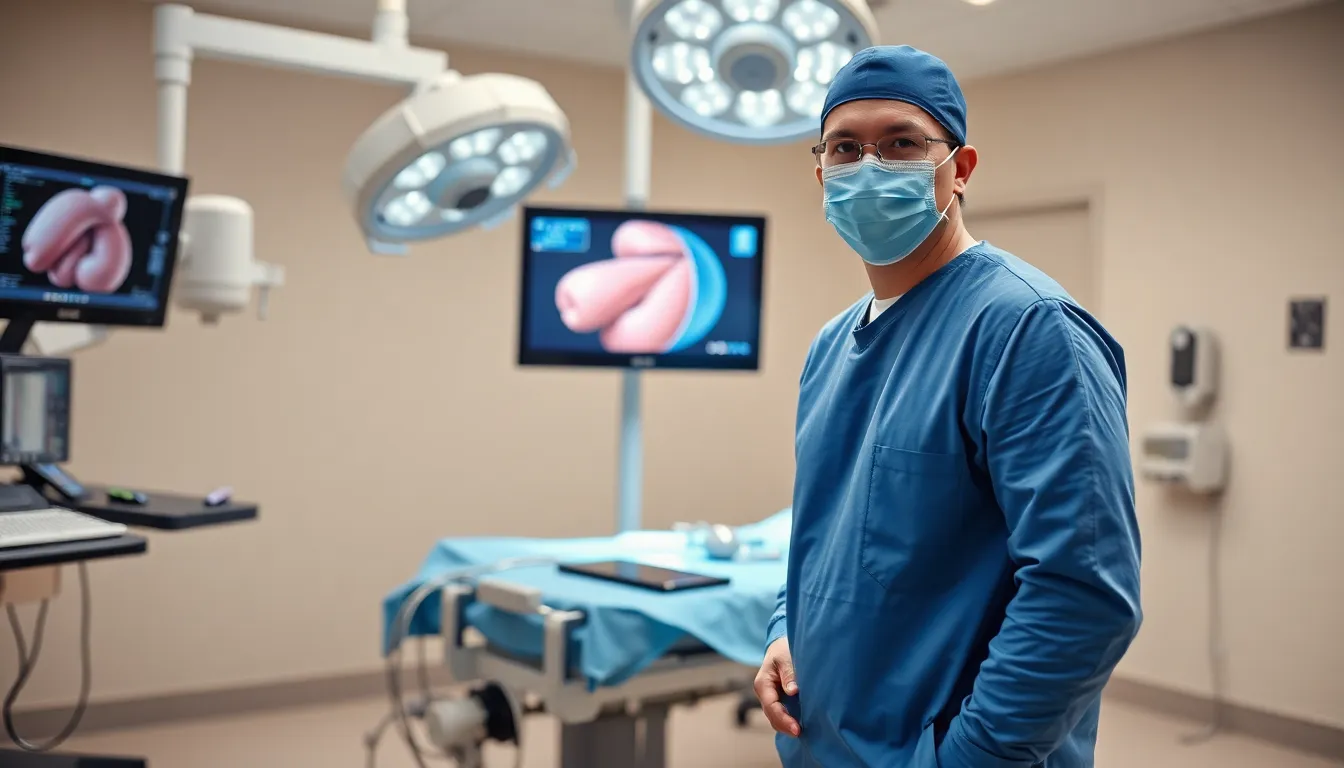Table of Contents
ToggleWhen it comes to gallbladder surgery, time is of the essence—literally! If you’ve found yourself pondering the big question of how long this procedure takes, you’re not alone. Many people are curious about what to expect, especially when it comes to their precious time. After all, nobody wants to miss out on their favorite Netflix binge or an important Zoom meeting because of a little organ removal.
Overview of Gallbladder Surgery
Gallbladder surgery focuses on removing the gallbladder, typically due to gallstones or related conditions. The procedure mainly occurs laparoscopically, which means surgeons use small incisions and a camera to guide them. This method tends to reduce recovery time and minimize scarring.
Surgeons usually complete gallbladder surgery in approximately one to two hours. The specific duration depends on factors such as the patient’s health and the complexity of the case. Laparoscopic surgery often takes less time than open surgery, which involves larger incisions. It’s essential for patients to understand each scenario, as individual circumstances can influence the overall timeline.
Post-operative recovery varies, but many individuals can resume normal activities within a week. Pain management, movement encouragement, and dietary adjustments help facilitate healing. Engaging in light activities post-surgery can support overall recovery; however, heavy lifting and intense exercise require a more extended recovery period.
Communication with healthcare providers proves crucial. Understanding pre-operative instructions and post-operative care enhances outcomes. Surgeons frequently offer personalized insights, addressing specific concerns and recovery expectations. By staying informed and prepared, patients can experience a smoother surgical journey, minimizing any disruption to their daily routines.
Types of Gallbladder Surgery

Gallbladder surgery primarily occurs in two forms: laparoscopic surgery and open surgery. Each type has its own techniques and recovery processes.
Laparoscopic Surgery
Laparoscopic surgery typically involves multiple small incisions. A camera guides the surgeon, promoting precision and minimizing tissue damage. This method generally lasts between one to two hours, depending on individual factors. Many patients appreciate the reduced recovery time; most can return to normal activities within a week.
Open Surgery
Open surgery requires a larger incision, allowing direct access to the gallbladder. Surgeons often perform this procedure in more complex cases where laparoscopic methods aren’t feasible. The surgery usually takes longer, often exceeding two hours, and patients face a longer recovery period. Hospital stays may be necessary, extending the overall recovery timeline. Careful post-operative support helps ensure effective healing and safe resumption of daily activities.
Factors Affecting Surgery Duration
Several factors can influence the duration of gallbladder surgery. Understanding these elements helps set realistic expectations for patients.
Patient Health
Patient health significantly affects surgery duration. Individuals with pre-existing conditions or complications may require additional time for the procedure. Furthermore, obesity can complicate laparoscopic surgery, adding extra minutes to the operation. A patient’s age also plays a role; older patients may exhibit slower recovery times, prompting a more cautious surgical approach. Surgeons tailor their techniques based on the patient’s overall health, which can lead to variations in time required to complete the surgery.
Surgeon Experience
Surgeon experience has a direct impact on the length of the surgery. Skilled surgeons usually perform procedures more efficiently, reducing the time spent in the operating room. Increased familiarity with laparoscopic techniques tends to result in shorter surgery times. Surgeons who frequently perform gallbladder removals can anticipate potential complications quickly, allowing them to manage the procedure effectively. Newer surgeons may take longer as they familiarize themselves with the process, potentially increasing the duration of the surgery.
Typical Duration of Gallbladder Surgery
Gallbladder surgery typically spans a specific timeframe, depending on multiple factors like the surgical method and individual health conditions. Understanding these time frames helps patients plan accordingly.
Average Surgery Time
Average surgery time for laparoscopic gallbladder removal ranges from one to two hours. Surgeons complete procedures more quickly with laparoscopic techniques due to smaller incisions and enhanced visibility through camera guidance. Complexity influences duration; surgeons may adjust their approaches based on the patient’s anatomy or underlying conditions. Open surgery often extends beyond two hours, especially in complex cases requiring larger incisions. Anticipating surgery length allows patients to prepare for the procedure effectively.
Recovery Time
Recovery time varies significantly based on surgery type and individual health. Most patients undergoing laparoscopic surgery return to daily activities within a week, benefiting from reduced pain and quicker healing. Surgeons often recommend gradual resumption of normal activities, emphasizing the avoidance of heavy lifting or intense exercise during the initial recovery phase. Open surgery typically necessitates a longer recovery period, sometimes involving several weeks before normal activities can resume. Effective post-operative care, including pain management and dietary adjustments, plays a vital role in the healing process.
Understanding the duration of gallbladder surgery is vital for patients planning their recovery and daily activities. With laparoscopic procedures typically lasting one to two hours and offering quicker recovery times, many find this method preferable. Factors like patient health, age, and surgeon experience can influence the surgery length, making it essential to discuss these aspects with healthcare providers. By staying informed about what to expect, patients can navigate their surgical journey with confidence, ensuring a smoother transition back to their normal routines.





